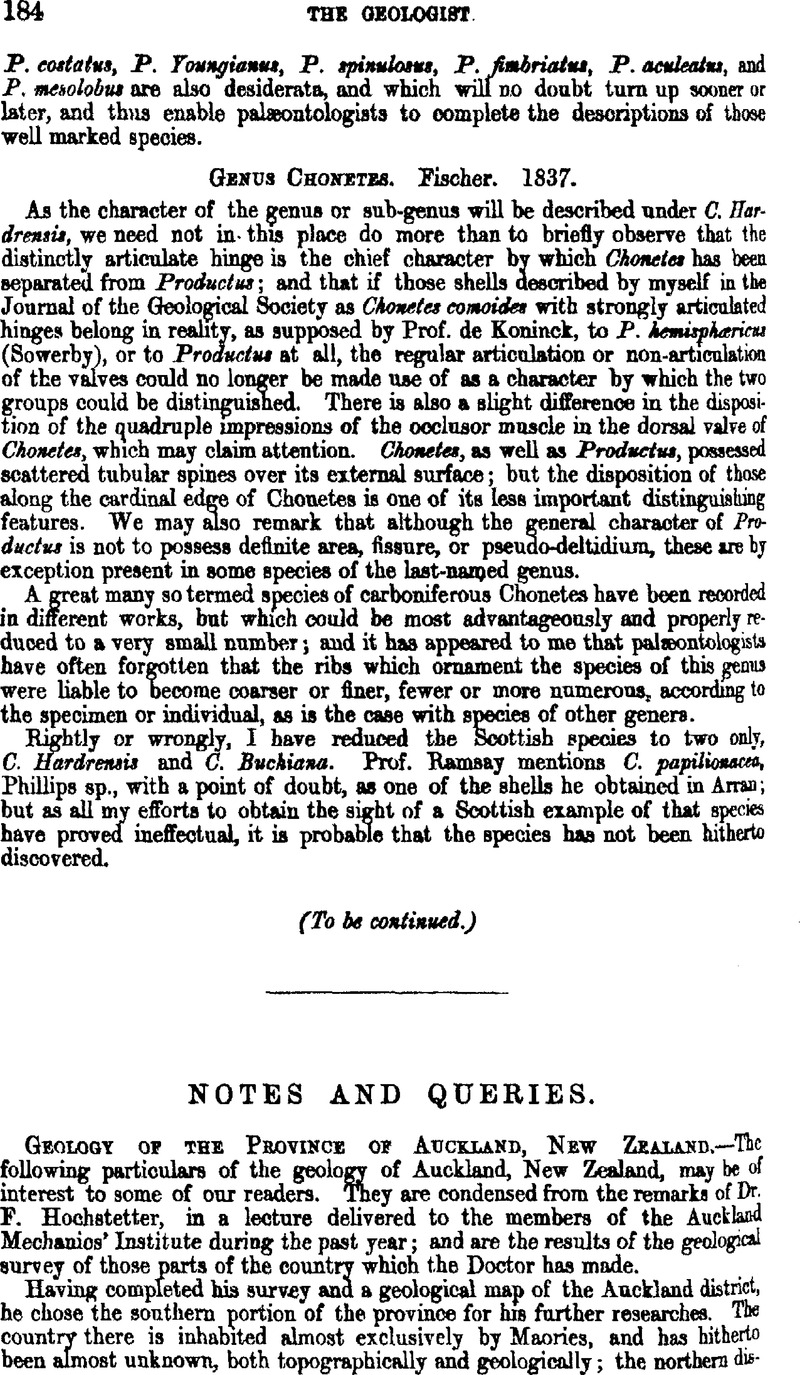No CrossRef data available.
Article contents
Notes and Queries
Published online by Cambridge University Press: 17 March 2016
Abstract

- Type
- Other
- Information
- Copyright
- Copyright © Cambridge University Press 1860
References
page 185 note * The word primary is used throughout as an equivalent term to our Palæozoic.
page 186 note * Dr. Hochstetter washed a few buckets of surface-earth and gravel, at a creek pointed out by Mr. Charles Heaphy, near King's Mill, at the Kapanga. Every panful showed scales of thin gold, with small fragments of quartz streaked and studded with veins and spangles of gold. These “specimens,” as they are called by diggers, show no, or very little, sign of being water-worn, but are sharp and crisp fragments, as if they had been broken up on the spot, or in the immediate vicinity. The quartz veins in the mountains should be thoroughly examined, and when once the day has come that the Coromandel gold-fields are worked, the attention of the digger should be directed as well to the hills immediately above any rich deposits as to the alluvial workings below.
page 196 note * See the “Catalogue of Antiquities of Stone, &c., in the Royal Irish Academy.” Dublin M. H. Gill.




